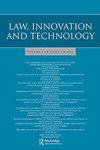Rule-following robots? Transitional legal disruption through regulatee design and engineering
Q1 Social Sciences
引用次数: 0
Abstract
ABSTRACT Artificial Intelligence (AI) and Extended Reality (XR) technologies present regulators with powerful tools to manipulate human behaviour, but more perniciously, human desire and indeed human being. This is because AI applications can interfere with our internal decision-making processes, and XR applications can affect our sensations by creating and mediating our experiences of the external world. When these technologically driven affordances are strained through contemporary cognitive science research to ground the notion that perceptions are processes for prediction error minimisation, such interferences can amount to designing and engineering the regulatee herself. Effectively, regulation no longer needs to be signalled in a normative regulatory environment, nor must it hardcoded into the architecture or technologically managed. Instead, AI and XR make it possible to design and create regulatees that embody the desired regulatory outcome. Paradoxically, however, such regulatory incorporation looks very much like the exercise of the agency of an agent and therefore is not recognised as a problem by contemporary legal principles and processes which seek to push back against obviously external influences or pressures. As a result, it is immensely difficult to articulate the legal or regulatory challenges posed by these developments, and to identify the harms through these doctrinal lenses.照章办事机器人吗?通过规范的设计和工程进行过渡性的法律破坏
人工智能(AI)和扩展现实(XR)技术为监管机构提供了强大的工具来操纵人类行为,但更有害的是,人类的欲望和人类本身。这是因为人工智能应用程序可以干扰我们的内部决策过程,而XR应用程序可以通过创造和调解我们对外部世界的体验来影响我们的感觉。当这些技术驱动的启示通过当代认知科学研究而变得紧张,从而使感知是预测误差最小化的过程这一概念成为基础时,这种干扰就相当于设计和设计被调节者自己。实际上,监管不再需要在规范的监管环境中发出信号,也不需要将其硬编码到架构中或通过技术进行管理。相反,人工智能和XR使设计和创建体现预期监管结果的监管成为可能。然而,矛盾的是,这种管制合并看起来非常像代理人行使代理权,因此不被寻求抵制明显外部影响或压力的当代法律原则和程序视为问题。因此,很难阐明这些发展带来的法律或监管挑战,也很难通过这些理论视角来识别危害。
本文章由计算机程序翻译,如有差异,请以英文原文为准。
求助全文
约1分钟内获得全文
求助全文
来源期刊

Law, Innovation and Technology
Social Sciences-Law
CiteScore
4.50
自引率
0.00%
发文量
18
期刊介绍:
Stem cell research, cloning, GMOs ... How do regulations affect such emerging technologies? What impact do new technologies have on law? And can we rely on technology itself as a regulatory tool? The meeting of law and technology is rapidly becoming an increasingly significant (and controversial) topic. Law, Innovation and Technology is, however, the only journal to engage fully with it, setting an innovative and distinctive agenda for lawyers, ethicists and policy makers. Spanning ICTs, biotechnologies, nanotechnologies, neurotechnologies, robotics and AI, it offers a unique forum for the highest level of reflection on this essential area.
 求助内容:
求助内容: 应助结果提醒方式:
应助结果提醒方式:


